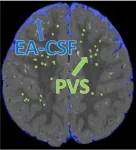(Press-News.org) New research has identified the specific biological mechanism behind the muscle dysfunction found in myotonic dystrophy type 1 (DM1) and further shows that calcium channel blockers can reverse these symptoms in animal models of the disease. The researchers believe this class of drugs, widely used to treat a number of cardiovascular diseases, hold promise as a future treatment for DM1.
“The main finding of our study is that combined calcium and chloride channelopathy is highly deleterious and plays a central role in the function impairment of muscle found in the disease,” said John Lueck, Ph.D., an assistant professor at the University of Rochester Medical Center (URMC) in the Departments of Pharmacology and Physiology, and Neurology. “Our research also suggests that muscle impairment in DM1 is potentially mitigated by common clinically available calcium channel blockers and that calcium channel modulation is a potential therapeutic strategy.” Lueck is lead author of the study, which appears in the Journal of Clinical Investigation.
Toxic RNA disrupts muscle function
Myotonic dystrophy is one of the most common forms of muscular dystrophy. People with the disease have muscle weakness and prolonged muscle tensing (myotonia), making it difficult to relax muscles after use. The disease also affects the eyes, heart, and brain, leading eventually to difficulty walking, swallowing, and breathing.
More than 20 years ago, URMC neurologist Charles Thornton, MD, and others uncovered how a genetic flaw–a ‘stutter’ that results in thousands of repetitions of code on a segment of chromosome 19–gives rise to DM1. This repeat expansion, which grows longer over time, results in the creation of abnormal RNA which accumulates in the nucleus of cells and affects the normal processing of many other RNAs. Thornton is a co-author of the current study and the research was a collaboration between the Lueck and Thornton labs.
This toxic RNA specifically disrupts the function of muscleblind-like (MBNL) proteins responsible for regulating the splicing of transcripts important for maintaining healthy muscle function. Among other things, these splicing defects impair the function of receptors for calcium and chloride channels, gateways in muscle cells that help convert electrical signals from motor neurons into chemical signals within the muscle cells. Specifically, the release of stored calcium causes muscle cells to contract, a process called excitation-contraction coupling (ECC), while lowering the concentration of the chemical depolarizes the cell and allows it to relax.
Calcium channel blockers to the rescue
Lueck and his colleagues were particularly interested in understanding this cycle as it held the potential to explain the muscular dysfunction in DM1. The first challenge was to focus on the muscle impact of the disease and eliminate the “noise” of the dozens of other defects wrought by the toxic RNA. “Myotonic dystrophy is a really complicated disorder, which you can think of as almost like an aggregate of many diseases,” said Lueck. To accomplish this, the team created a mouse model that mimicked four of the splicing defects found in DM1 in genes associated with the calcium and chloride channels. These mice exhibited severe myotonia, muscle weakness, impaired mobility, respiratory defects, and a marked reduction in lifespan.
The involvement of the calcium channel in muscle dysfunction presented an opportunity and a target—calcium channel blockers are widely used to treat, among other things, high blood pressure, cardiac arrhythmias, and migraines. When the team treated the mice with verapamil, a calcium channel blocker used to treat hypertension and chest pains, the mice quickly recovered muscle function and began to resemble their healthy, wild type peers. The findings were possible by years of close observation of the animals by Lily Cisco, a graduate student in the Lueck lab who is first author of the study.
The researchers are quick to emphasize that verapamil is NOT an appropriate treatment for DM1 in humans due to its potential cardiac side effects. “We think that the calcium channel is a new therapeutic target and if we can target it correctly, pharmacologically that it will improve muscle function and health. Our goal now is to find the appropriate and safe calcium channel blocker that will do the job and we believe it exists.”
Additional co-authors include Matthew Sipple, and Katherine Edwards with URMC. The research was supported with funding from the National Institute of General Medical Sciences, the National Center for Advancing Translational Sciences, the National Institute of Neurological Disorders and Stroke, the National Institute of Arthritis and Musculoskeletal and Skin Diseases, and the Myotonic Dystrophy Foundation.
END
Calcium channel blockers key to reversing myotonic dystrophy muscle weakness, study finds
2024-01-02
ELSE PRESS RELEASES FROM THIS DATE:
Enlarged spaces in infant brains linked to higher risk of autism, sleep problems
2024-01-02
Throughout the day and night, cerebrospinal fluid (CSF) pulses through small fluid-filled channels surrounding blood vessels in the brain, called perivascular spaces, to flush out neuroinflammation and other neurological waste. A disruption to this vital process can lead to neurological dysfunction, cognitive decline, or developmental delays.
For the first time, researchers Dea Garic, PhD, and Mark Shen, PhD, both at the UNC School of Medicine’s Department of Psychiatry, discovered that infants with abnormally enlarged perivascular spaces have a 2.2 times greater chance of developing autism ...
Growth hormone influences regulation of anxiety via a specific group of neurons
2024-01-02
Growth hormone (GH) acts on many tissues throughout the body, helping build bones and muscles, among other functions. It is also a powerful anxiolytic. A study conducted by researchers at the University of São Paulo (USP) in Brazil has produced a deeper understanding of the role of GH in mitigating anxiety and, for the first time, identified the population of neurons responsible for modulating the influence of GH on the development of neuropsychiatric disorders involving anxiety, depression and post-traumatic stress. An article on the study is published in the Journal of Neuroscience.
In ...
Influencers’ vulnerabilities: a double-edged sword
2024-01-02
ITHACA, N.Y. – New Cornell University-led research finds that social media platforms and the metrics that reward content creators for revealing their innermost selves to fans open creators up to identity-based harassment.
“Creators share deeply personal – often vulnerable – elements of their lives with followers and the wider public,” said Brooke Erin Duffy, associate professor of communication. “Such disclosures are a key way that influencers build intimacy with audiences and form communities. There’s a pervasive sense that internet users clamor for less polished, less idealized, ...
Designing the ‘perfect’ meal to feed long-term space travelers
2024-01-02
Imagine blasting off on a multiyear voyage to Mars, fueled by a diet of bland, prepackaged meals. As space agencies plan for longer missions, they’re grappling with the challenge of how to best feed people. Now, researchers reporting in ACS Food Science & Technology have designed the optimal “space meal”: a tasty vegetarian salad. They chose fresh ingredients that meet male astronauts’ specialized nutritional needs and can be grown in space.
Astronauts in space burn ...
Perceived time has an actual effect on physical healing
2024-01-02
Perceived time has a significant impact on the actual time it takes to heal physical wounds, according to new research by Harvard psychologists Peter Aungle and Ellen Langer.
Their study, published late last month in Nature Scientific Reports, challenges conventional beliefs about psychological influences on physical health. The findings suggest a broader range of psychological influences than is currently appreciated.
To complete their study, the authors used a standardized procedure to mildly wound volunteer subjects. Perceived time was then manipulated in the lab, with each study participant completing three ...
Use of cryopreserved oocytes in patients with poor ovarian response
2024-01-02
About The Study: This study of 67,000 freezing cycles among 47,000 patients reveals a distinct pattern in the utilization of cryopreserved oocytes among patients undergoing planned oocyte cryopreservation in the U.S. Despite the increase in number of patients pursuing oocyte cryopreservation, there is a notably low rate of return to utilize previously vitrified oocytes; notably, patients with poor ovarian response are more likely to return, although the time to return is similar to those with normal ovarian response.
Authors: Yuval Fouks, M.D., M.P.H., of Boston IVF-The Eugin Group in Waltham, Massachusetts, is the corresponding ...
Problem-solving skills training for parents of children with chronic health conditions
2024-01-02
About The Study: The findings of this systematic review and meta-analysis of 23 randomized clinical trials including 3,100 parents suggest that problem-solving skills training for parents of children with chronic health conditions may improve the psychosocial well-being of the parents, their children, and their families. Further high-quality randomized clinical trials with longer follow-up times and that explore physical and clinical outcomes are encouraged to generate adequate evidence.
Authors: Yuanhui Luo, Ph.D., of Central South University in Changsha, Hunan, China, is the corresponding ...
Reducing inequality is essential in tackling climate crisis, researchers argue
2024-01-02
In a report just published in the journal Nature Climate Change, researchers argue that tackling inequality is vital in moving the world towards Net-Zero – because inequality constrains who can feasibly adopt low-carbon behaviours.
They say that changes are needed across society if we are to mitigate climate change effectively. Although wealthy people have very large carbon footprints, they often have the means to reduce their carbon footprint more easily than those on lower incomes.
The researchers say there is ...
First step towards synthetic CO2 fixation in living cells
2024-01-02
Synthetic biology offers the opportunity to build biochemical pathways for the capture and conversion of carbon dioxide (CO2). Researchers at the Max-Planck-Institute for Terrestrial Microbiology have developed a synthetic biochemical cycle that directly converts CO2 into the central building block Acetyl-CoA. The researchers were able to implement each of the three cycle modules in the bacterium E.coli, which represents a major step towards realizing synthetic CO2 fixing pathways within the context of living cells.
Developing new ways for the capture and conversion of CO2 is key to tackle ...
Continuous glucose monitoring
2024-01-02
Monitoring glucose levels is one of the key elements in health monitoring. A research team has now developed a battery-independent fluorescent nanosensor based on single-wall carbon nanotubes and an inactive form of the enzyme glucose oxidase (GOx). Because the enzyme is not in its active form, the analyte is not consumed during the measurement, and continuous, reversible, and non-invasive bioimaging of glucose levels in body fluids and tissues is possible, the team reports in the journal Angewandte Chemie.
Blood glucose levels are typically measured using GOx-based electrochemical sensors. However, these sensors ...


